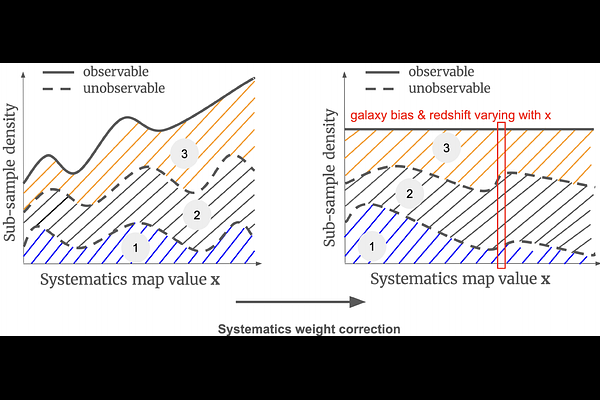Imaging systematics induced by galaxy sub-sample fluctuation: new systematics at second order

Imaging systematics induced by galaxy sub-sample fluctuation: new systematics at second order
Hui Kong, Nora Elisa Chisari, Boris Leistedt, Eric Gawiser, Martin Rodríguez-Monroy, Noah Weaverdyck
AbstractImaging systematics refers to the inhomogeneous distribution of a galaxy sample caused by varying observing conditions and astrophysical foregrounds. Current mitigation methods correct the galaxy density fluctuations, caused by imaging systematics assuming that all galaxies in a sample have the same galaxy density fluctuations. Under this assumption, the corrected sample cannot perfectly recover the true correlation function. We name this effect sub-sample systematics. For a galaxy sample, even if its overall sample statistics (redshift distribution n(z), galaxy bias b(z)), are accurately measured, n(z), b(z) can still vary across the observed footprint. It makes the correlation function amplitude of galaxy clustering higher, while correlation functions for galaxy-galaxy lensing and cosmic shear do not have noticeable change. Such a combination could potentially degenerate with physical signals on small angular scales, such as the amplitude of galaxy clustering, the impact of neutrino mass on the matter power spectrum, etc. Sub-sample systematics, cannot be corrected using imaging systematics mitigation approaches that rely on the cross-correlation signal between imaging systematics maps and the observed galaxy density field. In this paper, we derive formulated expressions of sub-sample systematics, demonstrating its fundamental difference with other imaging systematics. We also provide several toy models to visualize this effect. Finally, we discuss the estimation and mitigation of sub-sample systematics, with a combination of synthetic source injection (SSI), analytical benchmarking on SSI, and self-organizing map.